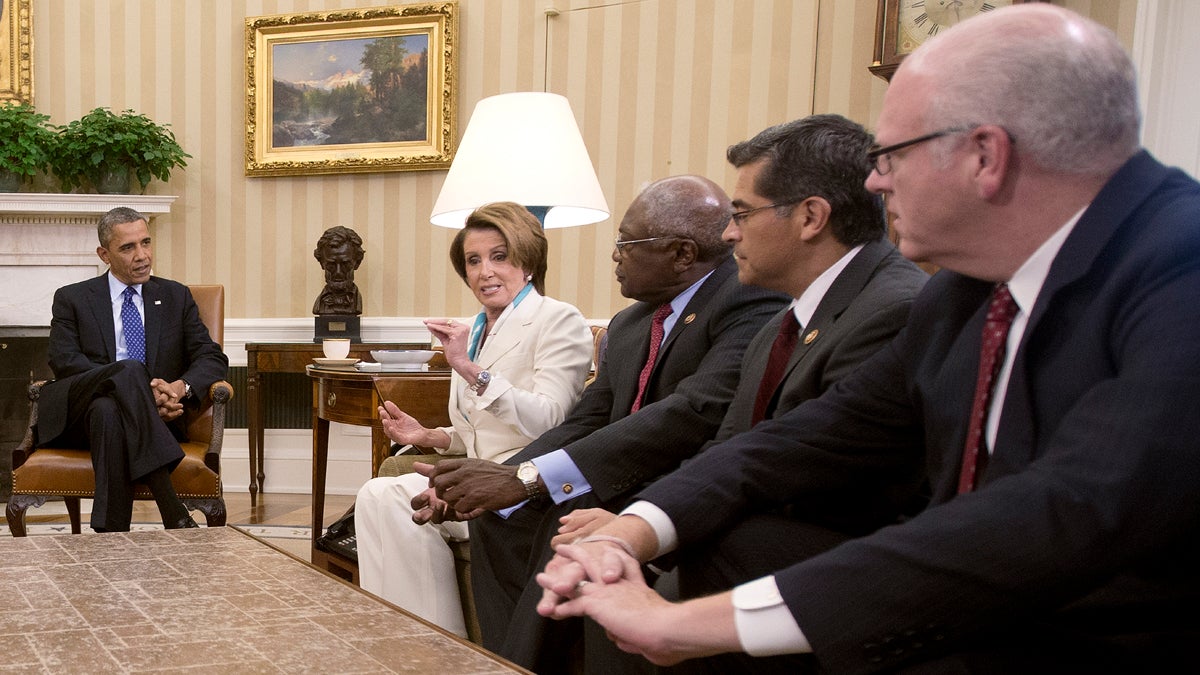The government shutdown said much about how our government actually operates

President Barack Obama, far left, is shown meeting with Democratic leadership in the Oval Office of the White House, Tuesday, Oct. 15, 2013. From left: House Minority Leader Nancy Pelosi of Calif., Rep. James Clyburn of S.C., Rep. Xavier Becerra of Calif., Rep. Joseph Crowley of N.Y. (AP Photo/Pablo Martinez Monsivais)
The United States of America supposedly just experienced 16 days of government shutdown until it ended with a last-minute debt ceiling vote last week. However, thinking back to the Schoolhouse Rock explanation of government that we all learned, it seemed that the government was not, in fact, shut down at all.
The president still reported to the Oval Office every day. He still held press conferences, signed stuff, and kept his watchful eye on national security. Congress still met for the arguing and wrangling that Congress has been doing since 2008. Little was actually done, but that is not unusual for this Congress and not a result of the shutdown. And courts all over the land were still meeting, judging people, sending people to prison, imposing fines, and generally deciding the things that courts decide.
So what did “government shutdown” actually mean? For our purposes, it meant that government workers were furloughed, government contractors were not being paid, national parks were closed, the FDA and NRC inspectors were not inspecting, FBI and CIA agents weren’t protecting us, and D.C. police and fire departments worked but went without pay.
Really, government shutdown means a shutdown of the administrative and enforcement states, and thus a shutdown of the largest portion of the executive branch of government only. Sure, some member of Congress went without their aides for a couple of weeks, so no one was making their copies or maintaining their Twitter accounts, but Congress itself was still working — and still being paid.
When Republican congresswoman Marsha Blackburn said on Oct. 1 to host Steve Doocy on Fox and Friends, “But Steve, people are probably going to realize they can live with a lot less government than what they thought they needed” (see below), she was talking about the parts of the government that provide the everyday services that people use and the parts of the government that protect people from crime, natural disaster, and terrorism.
In other words, the parts of the government that people actually use.
Ironically, what Republicans did by shutting down the government is remind the American people that the faces of the federal government — the president, the Congress, and the courts — largely do nothing for us in our everyday lives. If those were the parts of government that actually shut down, we probably would never have noticed the at all. What Republicans reminded us all of is that the very parts of government that they rail against and call unconstitutional are the parts that we need and use the most.
—
Aaron James Spencer is a student at Temple University Beasley School of Law. While in law school, Mr. Spencer has served on the boards of OUTLaw and the Gay and Lesbian Lawyers of Philadelphia (GALLOP). He is also currently serving on the executive board of Temple Law’s chapter of the American Constitution Society.
WHYY is your source for fact-based, in-depth journalism and information. As a nonprofit organization, we rely on financial support from readers like you. Please give today.

